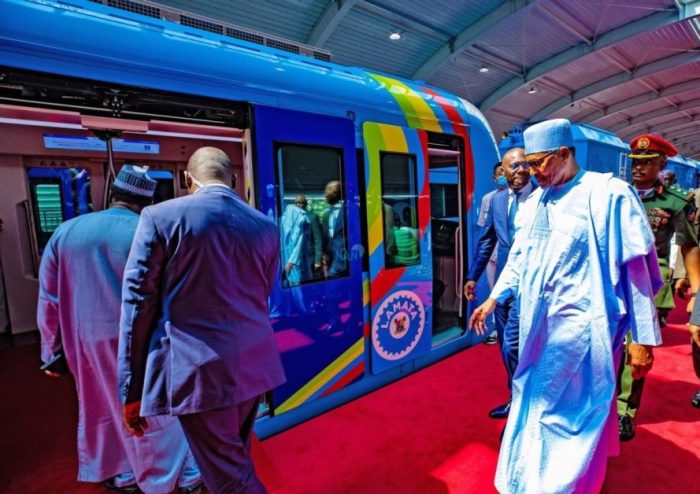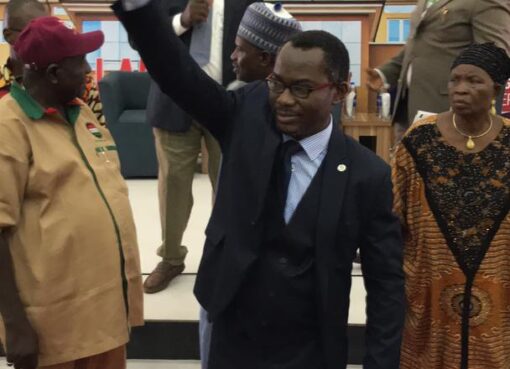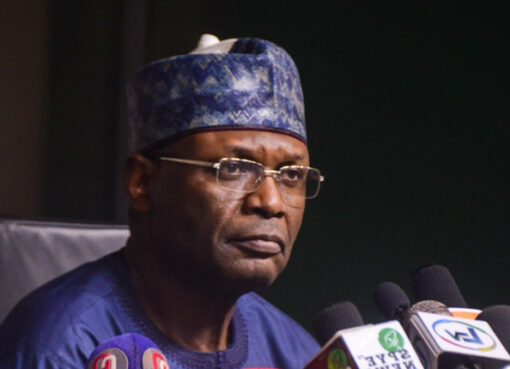The fare, power supply, trial run and when the train will be available to the everyday Lagosian.
The first phase of the Lagos Blue rail was commissioned by President Muhammadu Buhari with fanfare and a speech by Governor Babajide Sanwo-Olu on Monday.
The first phase of the 13 kilometres elevated train network stretches from Marina to Mile 2.
At the event, the governor signed a document to kickstart the second phase of the Blue rail project, which will cover a 14-kilometre stretch from Mile 2 to Okokomaiko and is expected to be completed by May.
Aside from the speech by the governor, which gave some details about the train, Kolawole Ojelabi, LAMATA spokesperson, also spoke with PREMIUM TIMES on the fare, power supply, trial run and when the train will be available to the everyday Lagosian.
Since the formal opening of the light rail, many Lagosians and other Nigerians have had many unanswered questions regarding the first light rail in the country.
Here is what to know about the latest infrastructural upgrade in Lagos:
1. The train network was proposed in 1983 during the Lateef Jakande administration and was flagged off in 2003 during the administration of an ex-governor of the state, Bola Tinubu, 20 years later.
2. The construction was undertaken by LAMATA and executed by the China Civil Engineering Construction Company, a subsidiary of China Railway Construction Corporation.
3. The state government said the first phase will transport 250,000 passengers daily and when completed, the entire 27km will transport about 500,000 passengers daily.
4. The first phase (Marina -Mile 2) has five stations – Marina, National Theatre, Iganmu, Alaba and Orile station.
5. Travel time: According to the state governor, it will take “just less than 15 minutes” from Marina to Mile 2, for a journey that usually takes an hour or more.
6. Fare: The pricing has yet to be decided upon. For the fare to be decided, certain things like the movement of passengers, the peak period times, the low period and other factors would have to be considered.
7. Danger: According to the Daily Trust newspaper, the Managing Director of LAMATA, Abimbola Akinajo, warned residents of the state not to trespass on the rail line because “it is electrified” and advised them to make use of pedestrian bridges to avoid being electrocuted.
Ms Akinajo urged the people to use the overhead bridges and other exits provided once the train becomes operational.
8. Trial and public use: It will be operational in late March or the first week in April at most, Mr Ojelabi said. Before it becomes operational, “select members of the public” will be invited to “come and experience how to use it.”
9. Access: Once it becomes operational, riders will be able to use the cowry card to access the train.
10. Power: The train will run on an independent power supply – Electric Multiple Unit (EMU).
The train will use the power known as the Third Rail Electrification System. It will be powered by a public power source, an Independent Power Plant (IPP) and a UPS system.
Mr Ojelabi said the essence of doing that is for the train to “run unhindered.”
“If there is an outage, the UPS kicks in until when the IPP will start up, passengers will not know when this transition takes place,” he said.
When asked what the train is running on currently, he said “there is an engine that is pulling it – a wagon, so that wagon is being used to test it.
When asked further if the train is currently being run on diesel, he said that “the train is currently being pulled by locomotive but that does not mean that the train is running on diesel.”
PREMIUM TIMES






